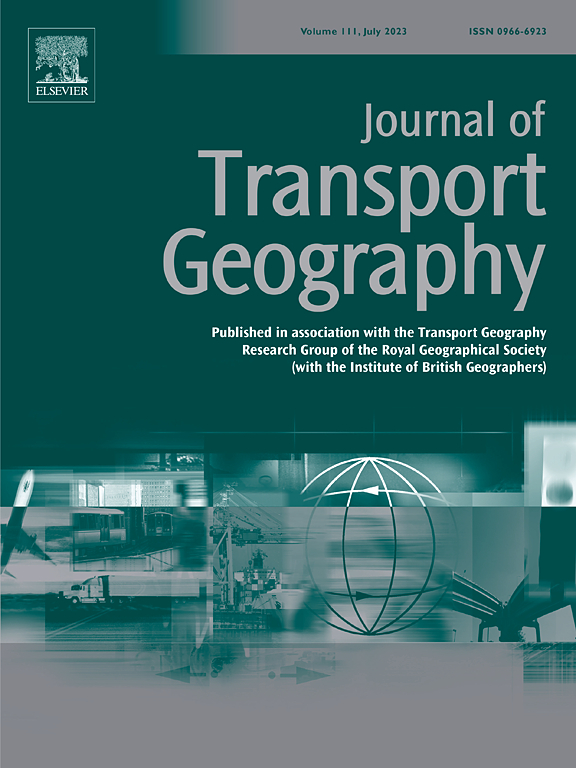Unveiling inequalities: The intersection of gender and income in accessibility in Curitiba, Brazil
IF 5.7
2区 工程技术
Q1 ECONOMICS
引用次数: 0
Abstract
This research investigates accessibility inequalities in Curitiba, Brazil, employing an intersectional analysis of gender and income groups within the urban context. We utilized an Agent-based model (AxS model) to generate artificial trajectories from the Origin-Destination (OD) survey aggregated dataset and calculate individual accessibility metrics. The findings reveal that, overall, men have greater accessibility to opportunities than women in Curitiba. The exception is in income class A (the highest), where women tend to travel shorter, more central routes and use cars more frequently, leading to higher accessibility. However, women in other income groups (lower income) face lower accessibility than their male counterparts, largely due to living in peripheral areas with fewer local opportunities and being more dependent on slower transport modes such as public transportation and walking to access these opportunities. The gender accessibility gap widens notably as income decreases, showing the significance of intersectionality of income and gender factors. Counterfactual simulations revealed that the choice of transport modes has a greater impact on women's individual accessibility than the distances traveled. The discussion emphasizes the need for mixed land use in peripheral areas and improvements on public transportation to ensure extensive coverage and reduce travel times to mitigate the effects of gender and income inequalities. This research contributes to studies on gender-sensitive urban planning, providing insights for policymakers and urban researchers seeking to foster inclusivity and equality in transportation systems and spatial development.
求助全文
约1分钟内获得全文
求助全文
来源期刊

Journal of Transport Geography
Multiple-
CiteScore
11.50
自引率
11.50%
发文量
197
期刊介绍:
A major resurgence has occurred in transport geography in the wake of political and policy changes, huge transport infrastructure projects and responses to urban traffic congestion. The Journal of Transport Geography provides a central focus for developments in this rapidly expanding sub-discipline.
 求助内容:
求助内容: 应助结果提醒方式:
应助结果提醒方式:


